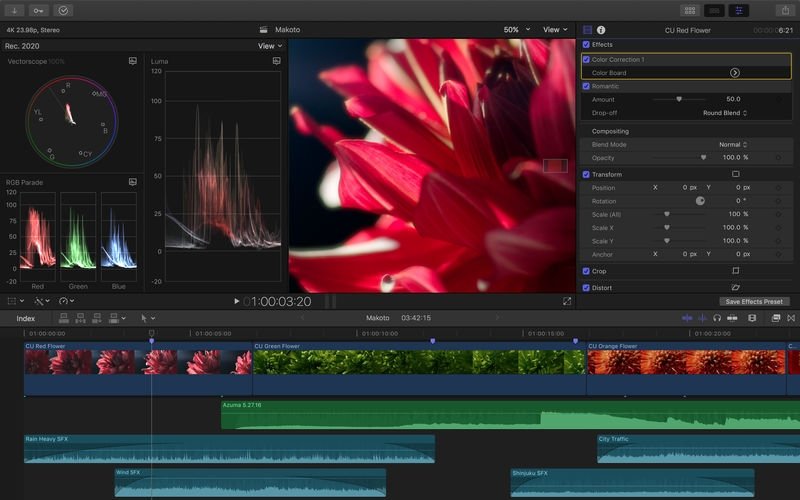
Keep in mind that real time is only for desktop previewing (which is where you’ll make all the editing decisions) final encoding to DV or another codec is not real time, but you can take care of that once at the end of the project. Apple says the number of possible simultaneous real-time effects depends primarily on your G4’s speed, and that a dual-processor Mac has significant advantages over most single-processor machines. Two layers worked occasionally three layers never did. On our base-level G4/500 with 512MB of RAM, we found that FCP 3 could indeed handle single layers of supported transitions and motions in real time. When editing in DV or Apple’s new OfflineRT video codec, all you need for real-time editing is a 500MHz G4. The other option was shelling out significant cash for real-time video hardware, such as Matrox’s RTMac card - hardware that fit only in a desktop Power Mac. You had to set up the effect and twiddle your thumbs while it rendered offline - and you had to go through that process dozens of times in a complex project. Up to now, FCP couldn’t render common transitions (cross-dissolves, wipes, and so on), motion effects (scaling and cropping), or still-frame graphics (titles and imported images) in real time.
#Final cut for big sur mac os x
Also new are a suite of high-level color-correction tools., a voice-over tool for adding narration, Mac OS X support, and dozens of other useful features.
#Final cut for big sur upgrade
Directors and editors are so taken with the possibilities of portable editing that it’s hard these days to find a filmmaker who doesn’t tote a TiBook with a copy of FCP.įCP 3 is an innovative upgrade that shows Apple has been listening to its professional customers, it addresses the two biggest limitations of low-cost digital editing: offline effects rendering and storage capacity. The nonlinear editing (NLE) app, a prestigious hit for Apple, has quietly revolutionized video-editing practice.
#Final cut for big sur pro
A published survey in 2008 by the American Cinema Editors Guild placed their users at 21% Final Cut Pro (and growing from previous surveys of this group), while all others were on an Avid system of some kind.įinal Cut Pro is on a roll. According to a 2007 SCRI study, Final Cut Pro made up 49% of the United States professional editing market, with Avid at 22%. It has also made inroads with film and television editors who have traditionally used Avid Technology's Media Composer. Since the early 2000s, Final Cut Pro has developed a large and expanding user base, mainly video hobbyists and independent filmmakers. The fully rewritten Final Cut Pro X was introduced by Apple in 2011, with the last version of the legacy Final Cut Pro being version 7.0.3. The software allows users to log and transfer video onto a hard drive (internal or external), where it can be edited, processed, and output to a wide variety of formats.

The most recent version, Final Cut Pro 10.6.4, runs on Mac computers powered by macOS Big Sur 11.5.1 or later.


Final Cut Pro is a series of non-linear video editing software programs first developed by Macromedia Inc.


 0 kommentar(er)
0 kommentar(er)
